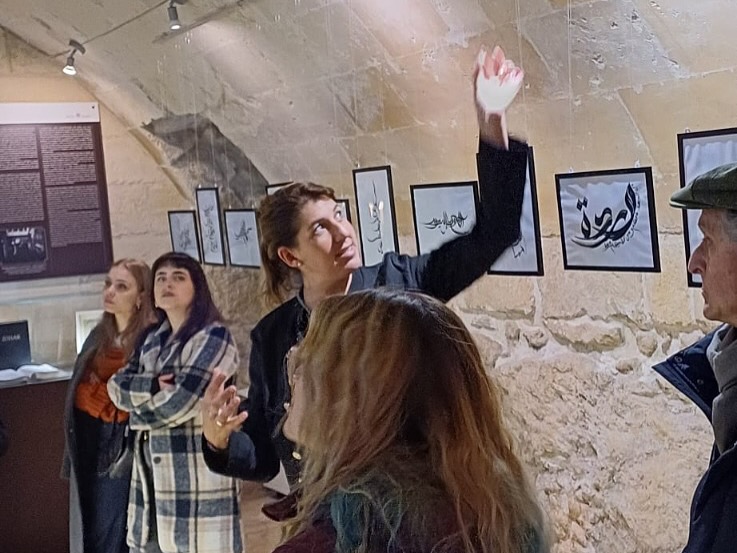LECCE – A “Mediterranean of peace” and its ancient heritage

Thanks to its geographical position, Puglia, a southern region that forms the heel of Italy’s “boot”, has always been a meeting point for different civilizations and cultures. Over the centuries, the region has hosted numerous peoples, including Greeks, Romans, Byzantines, Saracens, Ottomans and Jews, who have influenced each other. Although the region is no longer a transit point for emigration, its cultural heritage remains visible in its traditions, architecture and culture. Two exhibitions organized by the Jewish Museum of Lecce, the regional capital, explored this heritage to promote “a Mediterranean of peace.” The first, entitled “Apulia, crossroads of the Mediterranean – Mobility of people, goods and cultures,” curated by the museum’s director Fabrizio Lelli with Fabrizio Ghio, explored how the movement of people has shaped the region. The second exhibition, “Wander, persist, survive,” focused on Lenore Mizrachi-Cohen, a Jewish-American artist of Syrian origin whose work is inspired by Arabic and its distinctive calligraphy, and reflects the trauma of displacement. Curator Fiammetta Martegani called her exploration of wandering “a way of expressing the pain of her people, eternally uprooted,” a theme that resonates from Syria to Apulia’s own Jewish history and to Israel today in the shadow of October 7 and the hostages in Gaza.
Previously shown in Lecce and recently presented at Palazzo Montecitorio in Rome, the exhibitions marked an important milestone for the Museum of Lecce. The story of the museum began with the unexpected discovery of a mikveh, a Jewish ritual bath, during a construction initiative in the ex-Judecca, the Jewish quarter. This led to another important discovery. In this building there had been a synagogue and it was decided to create a museum dedicated to the Jewish heritage of Lecce and Apulia. Martegani was stunned by this discovery. Everything began in 2021, when the museum hosted an exhibition dedicated to the Aliyah bet: the migration of Jews who, after surviving the Shoah, fled to the coast of the newly born State of Israel. The project focused on the refugee camps set up in Puglia. “As an expert in contemporary art, I offered to transform one of the two rooms of the museum into a space dedicated to the promotion of some Israeli artists,” Martegani explained. So far, she has curated four exhibitions, including the project “Shades of Israel,” which was presented in the first days of October 2023 and featured works by twelve different artists. A few hours later, Hamas would unleash its massacre.
One of the consequences of this tragedy was the decline of tourism to and from Israel. The funding of the Region’s Tourism Authority, Pugliapromozione AReT, to promote Israeli tourism in Puglia was suspended from that day on, and the activities related to this area continued “without any contribution”.
Translated by Rebecca Luna Escobar and revised by Chiara Tona, students at the Advanced School for Interpreters and Translators of the University of Trieste, trainees in the newsroom of the Union of the Italian Jewish Communities — Pagine Ebraiche.
